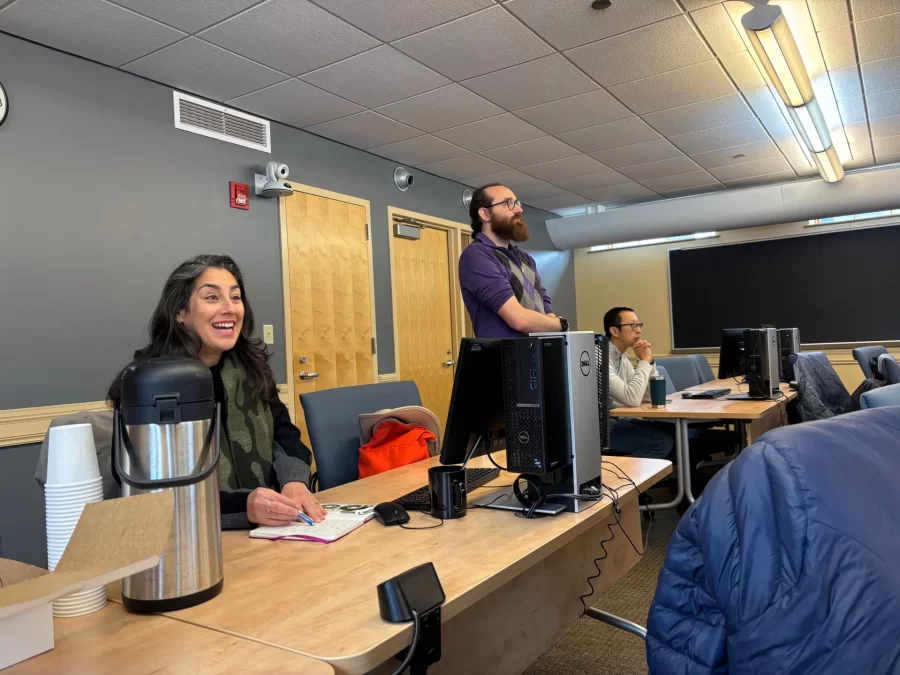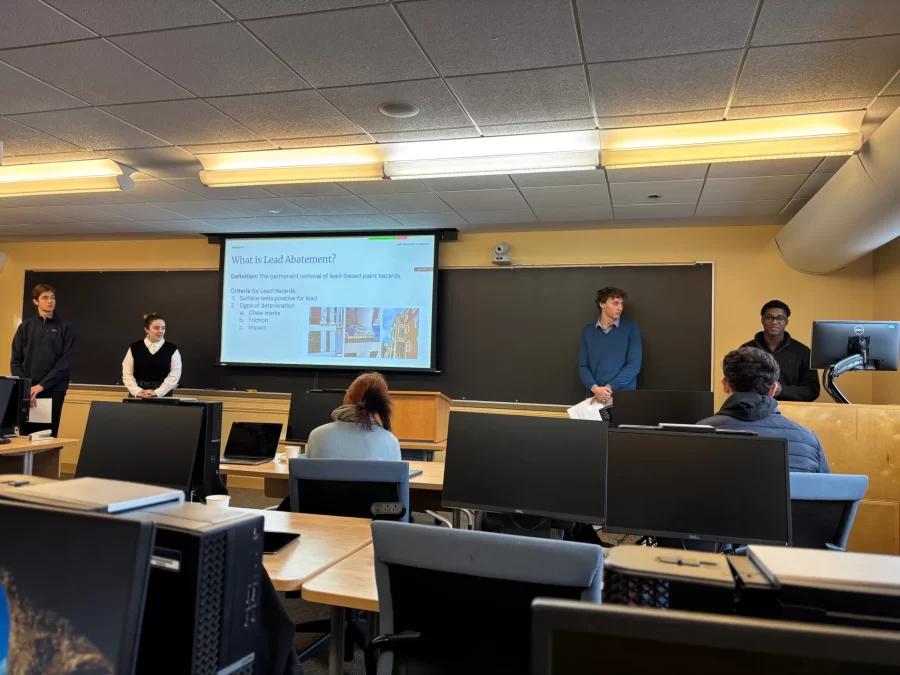Bates Students Can Hack It!
Amidst the last week of classes in December, fifteen students committed their unscheduled time for 48 hours to the final project for the course, Data Science for Economists. The project? A hackathon! Bates professor Kyle Coombs partnered with the City of Lewiston for the second time to run a data hackathon with a dual purpose: give students experience working with practical data sets while supporting the forward momentum of the resident-led, city-adopted Transformation Plan.
Jacqueline Crucet, Neighborhood Planner at the City of Lewiston, and Coombs began the hackathon approach in winter 2024 with a project focused on understanding the relationship between street light location and crime in downtown Lewiston. Building on the successes and lessons learned last winter, Coombs expanded the project to include every student in his Data Science for Economists course and scaffolded several assignments throughout the course to prepare for the focused 48-hours of data analysis and research at the end of the semester. The focus of this iteration of the hackathon was on lead abatement and reduction efforts in Lewiston.
Crucet first visited the class, which is cross-listed in both Economics and Digital and Computational Studies, in late September to set the stage for the project. Putting the students’ upcoming work in context, Crucet shared the nine-point Transformation Plan with an emphasis on Goal 1: “Grow a healthy future through a holistic lead-free Lewiston effort rooted in the Tree Streets” neighborhood (Growing our Tree Streets, 2017). The aging housing stock of the Lewiston area has made lead exposure a challenging issue for the city, with a particularly high concentration in the downtown neighborhood, the target area of the Transformation Plan. During her initial visit, Crucet worked with Coombs and his students to identify the data sets needed to answer questions about the efficacy and reach of the lead abatement projects undertaken to date.
Another key partner in this community-engaged learning project was Lindsay Gannon of Healthy Androscoggin, the leader of the lead-free Lewiston working group implementing Goal 1 of the plan. Alongside a large group of community stakeholders, Gannon and Healthy Androscoggin have worked to promote public awareness of the leading risk of lead poisoning: lead dust from deteriorating paint in homes built before 1950. While lead pipes contaminating drinking water is another concern, Gannon articulated that existing data tells us the most pressing cause of actual cases of lead poisoning in our local children is undoubtedly lead dust in homes and buildings.
Holistic context from Crucet and Gannon prepared the young Bates economists to apply critical thinking to their data science skills as they settled into meeting rooms in Chase Hall on December 3rd-5th, armed with their laptops, data sets, and a steady flow of coffee.
Three teams of five emerged from their coding caves and literature review lairs to present their findings to the City of Lewiston and Healthy Androscoggin on the snowy morning of December 5th. Each team presented their findings in response to the core question of whether Lewiston has targeted its Lead Abatement efforts appropriately. Each team took a unique approach to the question, interrogating the data for any trends in who has been reached effectively for lead abatement in their home or property, and who has not; researching effective programs in comparable cities; and developing heat maps of housing stock age and lead poisoning cases. One group compared the cost of lead abatement for each housing unit to the projected lifetime income loss of an adult who experienced lead poisoning as a child. Three groups presented diverse approaches with a unified general message: The lead-free Lewiston strategies are working, and lead poisoning incidents are trending downward.
In addition to positive reinforcement, the hackathon teams offered the following recommendations to the lead-free Lewiston working group based on their research and analysis:
- Look into school and childcare buildings built before 1950. The current focus has been, appropriately, on houses and apartments, so these buildings that are also hubs for our young people are an important next step.
- While pre-1950s buildings are an important inflection point, when deciding priorities, consider that the data suggest an even higher risk of lead in buildings constructed before 1933.
- Whenever possible, collect demographic data associated with housing and lead abatement. This could help identify the need for different types of outreach, such as multilingual materials to reach immigrant populations.
Crucet and Gannon, who both attended the presentations, expressed appreciation for the many insights, visual representations of the data, and additional literature on this pressing issue. As one part of a larger transformation plan, it can be difficult to get this kind of information synthesized and represented effectively, Crucet shared in her feedback and questions. Having the focused attention of the class to provide fresh insights is invaluable, both partners agreed.
Similarly, students shared their appreciation for the chance to put their classroom skills to work in a “real world” scenario. One student reflected after the course, “The most satisfying part of my CEL experience was being able to tell people working for the city of Lewiston that, according to the data, they have been taking the right steps to control the lead issue in the city.” Others noted that meeting and connecting with people beyond Bates while learning more about the community they live in as Batesies was a valuable experience.
As we gear up for the next semester of Data Science for Economists, Coombs and Crucet are debriefing and strategizing on the next topic to be tackled with the hackathon model.

